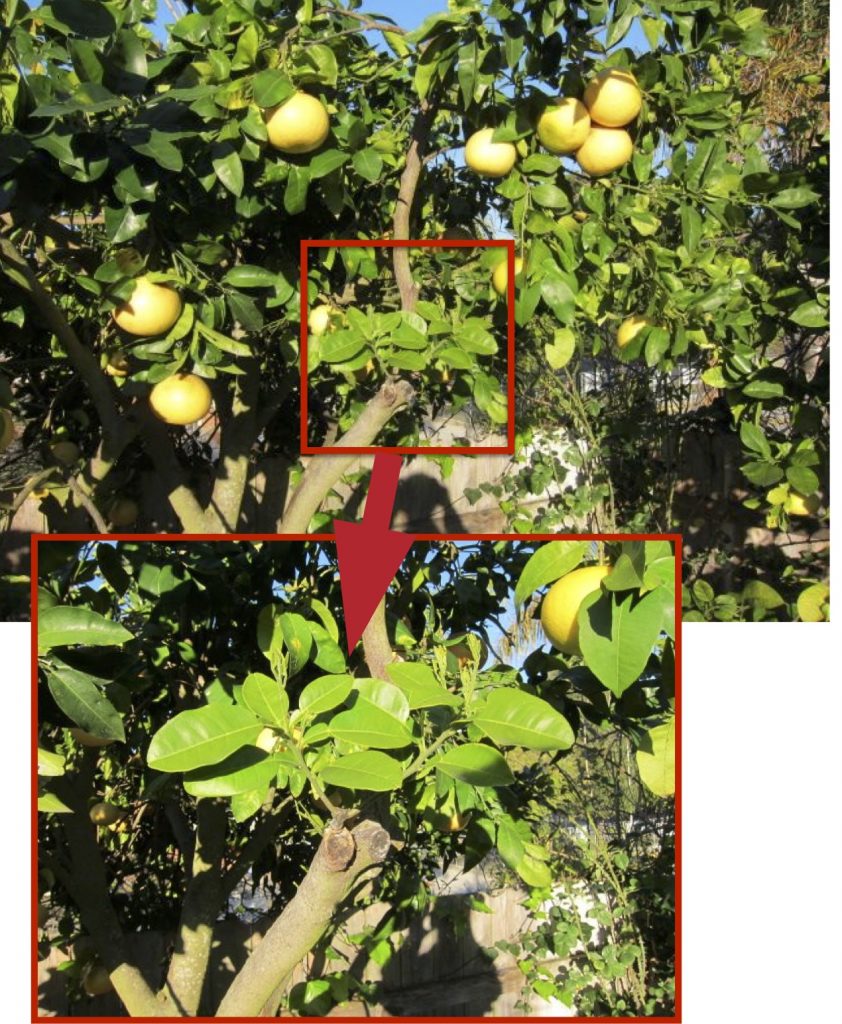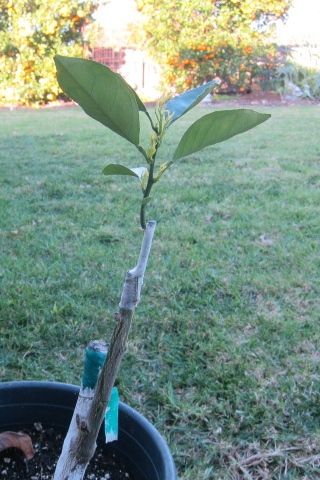
Do you have a citrus tree that doesn’t bear fruit, or the quality of the fruit is not what you expected? Maybe that’s because the rootstock has “taken over.”
Or maybe you have a small yard, yet you would like to have more citrus varieties. Grafting is a good solution to add variety and create a “rolling harvest” to your fruit collection. When one type is done, the next type becomes ripe.
Citrus trees are generally made up of two parts: a rootstock and the scion. The nursery attaches some budwood (scion) of the desired cultivar to the top of a seedling. The seedling or “rootstock” has desirable characteristics that make the root system anchor well and exhibits interesting qualities. For example, some rootstocks do better in clay soil than others, some resist pests and diseases, and some allow for prolific production of fruit.
But watch out for that rootstock! They sometimes send up “suckers” below the graft union that need to be rubbed off or strenuously removed with a lopper, depending upon how long you’ve let it go.
If your tree isn’t producing much fruit, there are several common reasons. Most often, the tree is immature. If it is less than 3 years old, it’s still putting most of its energy into growing a strong root system. Once the tree is established, at year 5, if there is still little fruit, it could be that a sucker from the rootstock shot up and crowded out the scion, essentially obliterating it. Other reasons for poor fruiting are lack of water or drought stress. Sometimes it’s because you applied fertilizer at the wrong time for that tree, during flowering. Quite often, it’s an alternate-bearing tree that gives fruit every other year.
If you think the rootstock took over your tree, never fear. Do NOT remove the tree. Instead, have someone “topwork” a scion onto the rootstock, usually with a bark graft. It will fruit much sooner than a new tree that needs three years to get established.
Where do you get scions? The Citrus Clonal Protection Program (CCPP) offers a plethora of varieties, and the best time to get your budwood is February, March, and April while the bark is “slipping” and grafts can be inserted into a cut made in the cambiam layer. To learn how to do grafting, visit your neighborhood chapter of California Rare Fruit Growers (CRFG) and watch their presentations or hook up with an experienced grafter to get a demonstration.
Citrus fall into a special category for budwood. Though CRFG offers a scion exchange once a year, you won’t find citrus there because it’s under quarantine. A devastating disease called Citrus huanglongbing (HLB), previously called citrus greening disease, often carried by the flying citrus psyllid, is under strict observation by officials and citrus industry experts. The CCPP offers disease-free and true-to-type budwood that can be safely applied to your rootstock.

For more information, contact Judy at Judy’s Homegrown.
